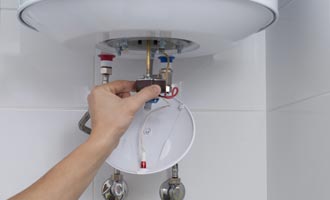Easy Processes to Boost Low Water Pressure in Your Home
Easy Processes to Boost Low Water Pressure in Your Home
Blog Article
We've found this article involving 10 Reasons for Low Water Pressure in Your House down the page on the web and decided it made perfect sense to discuss it with you on this page.

Low water stress in your house can be an irritating issue, affecting whatever from bathing to cleaning dishes. If you're experiencing weak water circulation, there are a number of feasible causes and services to discover. In this guide, we'll review usual factors for low water stress and sensible actions to resolve the problem successfully.
Intro to Low Tide Pressure
Low water pressure happens when the circulation of water from your taps, showers, and various other components is weak than normal. This can make everyday tasks more tough and much less efficient. Understanding the reasons for low tide pressure is crucial to locating the ideal remedy.
Typical Causes of Low Water Pressure
Faulty Pressure Regulatory Authorities
Stress regulatory authorities are responsible for preserving regular water stress in your home. If they malfunction, it can cause low tide pressure or irregular flow throughout the house.
Local Water Issues
Sometimes, the problem exists outside your home. Municipal water issues, such as main line leaks or upkeep job, can temporarily decrease water stress in your area.
Pipeline Obstructions
With time, pipes can become blocked with mineral deposits, sediment, or debris, restricting the flow of water. This is an usual problem in older homes with galvanized steel pipelines.
Rust
Rust within pipelines can cause leaks and lowered water pressure. Corrosion accumulation can constrict water circulation, especially in maturing plumbing systems.
How to Diagnose Low Water Pressure
Examining Pipes
Inspect visible pipelines for indicators of leaks, corrosion, or blockages. Pay attention to any kind of unusual audios, such as knocking or rattling pipelines, which can indicate problems within the plumbing system.
Consulting with a Plumber
If you're unable to identify the cause of low tide stress, think about employing a specialist plumber to carry out a complete evaluation. They can determine underlying concerns and suggest suitable solutions.
Inspecting Faucets and Fixtures
Beginning by checking the water pressure at different faucets and fixtures throughout your home. If the problem is separated to certain areas, it might show local issues.
DIY Solutions to Fix Low Tide Stress
Flushing Hot Water Heater
Sediment build-up in the hot water heater can restrict circulation and decrease efficiency. Flushing the tank occasionally assists eliminate debris and maintain optimum performance.
Inspecting Pressure Regulator
Guarantee that the pressure regulator is functioning correctly. Readjusting or changing the regulatory authority can aid recover proper water pressure throughout your home.
Cleaning Aerators and Showerheads
Natural resources can collect in aerators and showerheads, minimizing water flow. Remove and cleanse these elements on a regular basis to enhance water pressure.
Clearing Up Clogs in Piping
For small blockages, attempt utilizing a plumbing serpent or chemical drainpipe cleaner to clear blockages in pipes. Be cautious when using chemicals and adhere to safety guidelines.
When to Call an Expert Plumber
If do it yourself initiatives fall short to solve the concern or if you believe substantial plumbing problems, it's best to look for help from an accredited plumber. They have the experience and devices to deal with complicated problems safely and efficiently.
Preventive Measures to Keep Water Stress
Mounting a Stress Booster
Consider setting up a pressure booster pump to enhance water pressure in areas with consistently low circulation. This can be specifically beneficial for multi-story homes or residential or commercial properties with high-demand components.
Monitoring Water Usage
Be mindful of water usage habits and stay clear of overtaxing the plumbing system. Straightforward changes, such as shocking showers and washing tons, can aid preserve sufficient water stress.
Regular Upkeep
Arrange routine upkeep for your plumbing system to avoid issues such as rust, leaks, and blockages. Addressing small troubles early can help prevent even more significant repair services later.
Conclusion
Taking care of low tide stress can be frustrating, but determining the underlying causes and carrying out ideal solutions can restore optimum circulation throughout your home. Whether it's cleaning up aerators, checking pipes, or seeking advice from a plumber, taking positive actions can make certain a stable supply of water for your day-to-day requirements.
FOUR WAYS TO FIX LOW WATER PRESSURE NOW
Turning on a shower or faucet only to find the water comes out in a sad, slow drizzle is never a good feeling. How exactly are you supposed to wash a pan or take a quick shower when it takes 10 minutes just to rinse off a little soap? The good news is that when your water pressure is bad, there's always a cause: typically one that can be easily fixed. Here are some of the most common causes of low pressure and what you can do to fix the issue:
DEBRIS AND MINERAL DEPOSIT BUILDUPS
If you notice low water pressure from just one or two of the fixtures in your house, the problem likely has to do with debris buildup. Water is full of minerals and other debris, all of which can accumulate in your pipes and on your fixtures. This can cause a blockage that affects how much water flows through. To fix this, try filling a small plastic bag with white vinegar, and use a rubber band to hang it around your showerhead or faucet. Let the head of the fixture soak for a few hours, and the vinegar should loosen the deposits.
WATER LEAKS
Leaks are another common cause of low water pressure. If water is flowing out of your plumbing through a hole or crack before it can reach your fixture, the pressure coming out of the faucet or showerhead will be lower. A plumbing professional is your best bet for finding and repairing a leak in your water supply pipes.
Leaks are another common cause of low water pressure. If water is flowing out of your plumbing through a hole or crack before it can reach your fixture, the pressure coming out of the faucet or showerhead will be lower. A plumbing professional is your best bet for finding and repairing a leak in your water supply pipes.
A VALVE ISSUE
If you have low water pressure throughout your home, check your main shut-off valve to make sure it's completely open. You may also want to see if there's a pressure-reducing valve installed. If there is, have a plumber help you adjust the settings to get the pressure you're looking for.
OTHERS USING WATER
Believe it or not, your low water pressure could be caused by your neighbors. If you notice low pressure at certain times of day, it may be because you and the people living next to you have similar schedules - when everyone is showering at the same time, the pressure will be lower in every home. Low pressure throughout the neighborhood may also be caused by an issue with your municipal water supply. If that's the case, call the supplier to see if they're working on the issue.
https://www.rotorooter.com/blog/water-leaking/low-water-pressure-fixes/

I have been very intrigued by 10 Reasons for Low Water Pressure in Your House and I am hoping you appreciated the blog entry. Those who appreciated our blog post plz make sure you remember to pass it around. Thanks for your time. Come back soon.
Schedule An Appointment Report this page